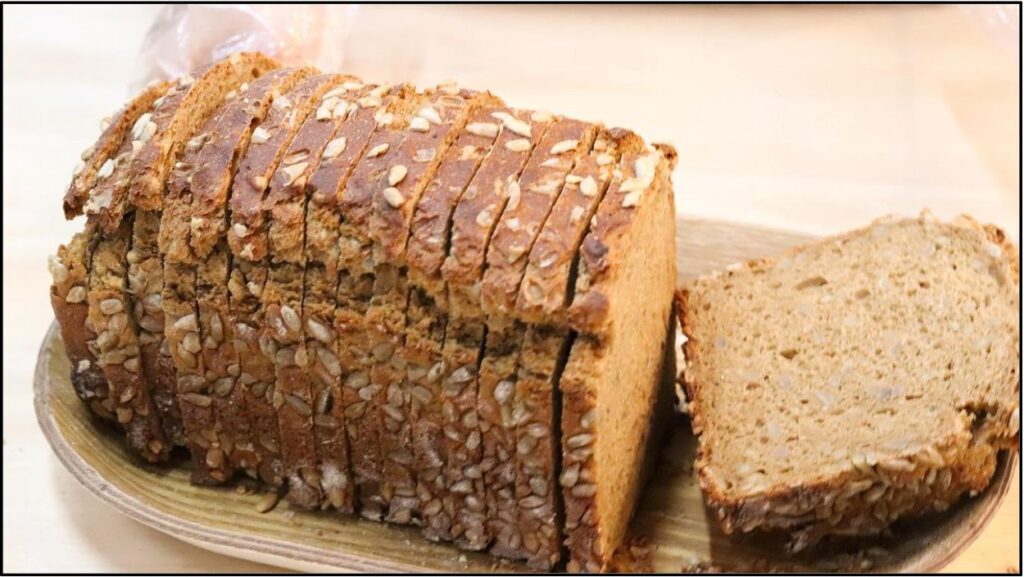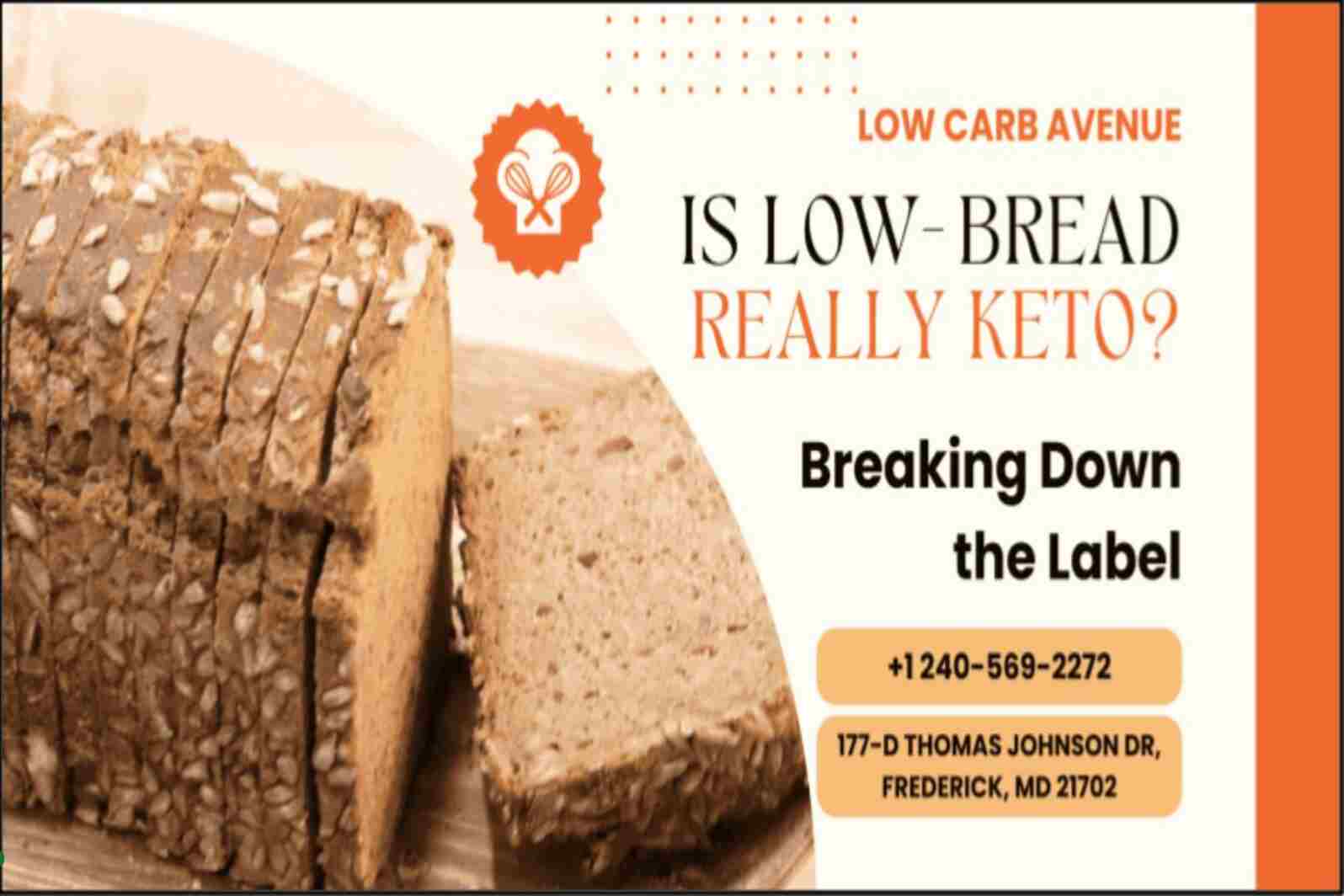In the world of keto diets, one of the most significant challenges is saying goodbye to bread. But with the rise of low-carb alternatives, many people are wondering: Is low-carb bread really keto-friendly? The promise of enjoying bread again without derailing your keto lifestyle sounds too good to be true. But how do you know if that loaf you’re eyeing at the store is genuinely suitable for your keto diet?
In this article, we’ll take a deep dive into the key factors that determine whether low-carb bread is truly keto, using insights from Low Carb Avenue and breaking down the label to help you make informed choices. Let’s get started!
What Makes Bread “Low-Carb”?
Low-carb bread typically contains fewer carbohydrates than traditional bread, making it an appealing choice for those following a keto diet. The typical bread made from wheat flour is packed with high levels of carbohydrates, which can interfere with reaching or maintaining ketosis—the metabolic state where your body burns fat instead of carbs. To ensure bread stays keto-friendly, manufacturers often use alternative flours like almond flour, coconut flour, or psyllium husk, which are lower in carbohydrates.
However, not all low-carb bread is created equal. Some breads may be marketed as low-carb but still contain ingredients that could push your body out of ketosis. The key is to closely examine the nutritional label and ingredient list to determine if the bread fits into your keto diet.
The Keto Criteria: What to Look For on the Label
To understand whether a loaf of bread qualifies as low carb bread for keto diet, it’s important to know what the keto diet requires in terms of carbs. Typically, on a keto diet, you aim for less than 20 to 50 grams of net carbs per day. This is a very low carb threshold that helps your body burn fat for energy instead of carbohydrates. So, when choosing low-carb bread, you’ll want to look for a bread that falls within a reasonable range of net carbs per serving.
When reading the label on a loaf of low-carb bread, be sure to focus on the following:
- Total Carbohydrates and Net Carbs
The term “net carbs” is crucial in keto-friendly bread. Net carbs are calculated by subtracting fiber and certain sugar alcohols (which do not impact blood sugar) from the total carbohydrates. Low-carb bread for keto diet should ideally have around 3-7 grams of net carbs per slice, making it a manageable choice within your daily carb limit. - Fiber Content
A higher fiber content is often a good sign that a bread may be keto-friendly. Fiber helps lower the net carbs and also provides digestive benefits. Low-carb breads made with ingredients like almond flour, flaxseed meal, or chia seeds tend to have higher fiber content, which can make the bread a healthier, keto-friendly option. - Ingredients List
Always check the ingredients. While low-carb bread for keto diet will generally avoid wheat flour, it should also be free from other high-carb fillers or artificial sweeteners that might cause blood sugar spikes. Ingredients such as almond flour, coconut flour, psyllium husk, and eggs are excellent low-carb choices. Avoid breads with added sugars or unnecessary starches like tapioca or corn starch, which can increase the carb count. - Protein Content
Protein helps balance blood sugar and increases satiety, making it an important component in keto-friendly bread. The higher the protein content, the more likely the bread will fit into your keto diet. - Fats
Healthy fats like coconut oil or olive oil are often included in low-carb bread to help boost the fat content, which is essential for maintaining ketosis on the keto diet.
Breaking Down the Label: Low-Carb Bread from Low Carb Avenue
Low Carb Avenue is a popular source for those looking to explore keto-friendly products, and their low-carb bread is a fantastic example to break down. Their low-carb bread is marketed as being low in carbs but rich in healthy ingredients like almond flour, flaxseed, and psyllium husk.

Let’s take a closer look at how the bread stacks up when analyzed against the keto criteria:
- Carb Content: The bread from Low Carb Avenue contains approximately 3 grams of net carbs per slice, which is well within the acceptable range for the keto diet.
- Fiber: One slice provides a solid dose of fiber, which helps lower the net carb count. It’s made with flaxseed and psyllium husk, which are both excellent sources of fiber that won’t spike your blood sugar.
- Ingredients: The bread is free of any high-carb fillers like wheat flour or starches, which can throw you off your keto diet. Instead, it uses almond flour as a base, ensuring that the bread is both low in carbs and high in healthy fats.
- Protein: Low Carb Avenue’s bread also contains a decent amount of protein, which helps keep you feeling full longer and adds to the overall nutritional profile.
- Fats: With added healthy fats from coconut oil and other ingredients, this bread helps support ketosis and makes it a good option for those looking to meet their daily fat intake.
Common Misleading Claims: What to Watch Out For
While low-carb bread might seem like a great option, some breads labeled as “low-carb” may still be high in certain ingredients that are not keto-friendly. Here are a few things to be cautious about when shopping for bread:
- Hidden Sugars
Some low-carb breads contain sugar alcohols or added sugars that can still cause a blood sugar spike, especially if consumed in large quantities. Always double-check the label to ensure that any sweeteners used are truly keto-friendly, like stevia or erythritol. - Unhealthy Fats
Avoid low-carb breads that use trans fats or unhealthy oils. These fats may harm your health in the long run and won’t contribute to your keto goals. Look for breads that use coconut oil, olive oil, or other heart-healthy fats. - Unnecessary Fillers
Some brands may add extra starches, like tapioca or potato starch, to improve the texture. These can increase the carb count and make the bread unsuitable for a keto diet.
Conclusion: Is Low-Carb Bread Truly Keto-Friendly?
Low-carb bread can indeed be a great addition to a keto diet, but it’s essential to choose carefully. Not all breads labeled as low-carb are created equal, and the key to enjoying bread while staying on track with your keto diet is by carefully reading the label. Look for low-carb bread with a low net carb count, high fiber content, and healthy ingredients like almond flour, flaxseeds, and psyllium husk.
The low-carb bread from Low Carb Avenue is an excellent example of a truly keto-friendly option. With around 3 grams of net carbs per slice and healthy fats, this bread makes it easy to enjoy a sandwich, toast, or even a burger bun without compromising your keto goals.
Remember, not all low-carb bread is made for the keto diet, so always read the labels and make sure it fits your macronutrient requirements. With the right bread, you can continue to thrive on your keto journey without feeling deprived.


